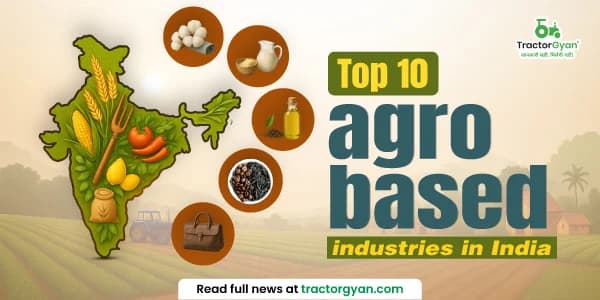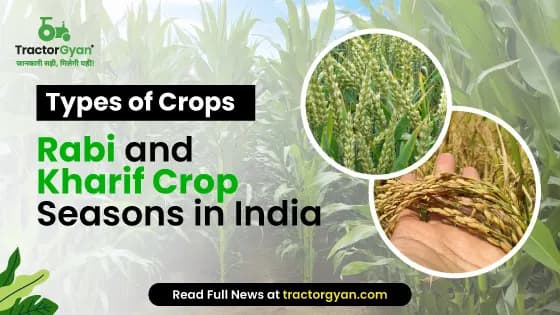Different Types of Mushroom Cultivation in India
टेबल ऑफ कंटेंट
One of the most profitable agricultural businesses that you can start with little capital and little space is mushroom cultivation. Mushroom farming in India is increasingly becoming more popular as a secondary source of income for many people.
Today, mushroom farming is India's most fruitful and lucrative industry. It is progressively gaining popularity in India because it quickly turns the laborious labor of farmers into profit. In India, farmers employ mushroom cultivation as a secondary source of income. Mushroom cultivation is mainly carried out in the states of Uttar Pradesh, Kerala, and Tripura.
Mushroom are delicious in taste it is rich in proteins, fibers, potassium, copper, and other vital minerals. Mushrooms comes from a family of fungi. There are various types of mushrooms in India. Though mushrooms are included in the family of vegetables. They possess the same characteristics as that of a plant they have 90 percent of water in them and a significantly low amount of calories and fats.

Mushroom Cultivation in India
In India, there are two different kinds of mushroom farmers that cultivate the crop on a small basis. A commercial mushroom cultivation grower continues year-round large-scale output.
The only areas where farmers can grow seasonal button mushrooms are temperate areas like Himachal Pradesh, Jammu, and Kashmir, hilly areas of Uttar Pradesh, and hilly areas of Tamil Nadu, and North Eastern areas. In these locations, mushroom cultivation farmers can only harvest two to three button mushroom plants per year.
To succeed in the commercial mushroom growing sector, the following factors must be taken into consideration before beginning mushroom farming in India:
For successful participation and monitoring purposes in mushroom cultivation the mushroom farm should be located closer to the farmer's home there should be an abundance of water present on the farm. Simple access to raw materials at affordable costs in the area simple access to workers at less expensive costs availability of power at affordable rates, as electricity is a crucial component in the growth of mushrooms. The farm should be free of industrial pollution like chemical vapors, and sewage disposal should be possible. The farm should have room for expansion in the future.
Different types of Mushrooms in India
There are mainly three different types of mushrooms in India namely oyster mushrooms, paddy straw mushrooms, and button mushrooms. All these types of mushroom variety in India are of commercial importance as they are grown over different techniques, and methods.
1. Button mushrooms
The most popular types of mushrooms in India are button mushrooms, often referred to as white mushrooms, baby mushrooms, and cultivated mushrooms. These mushrooms can be consumed raw or cooked, and are frequently added to salads, soups, and as toppings for pizza. In the sixteenth century, button mushrooms were first grown. Button mushrooms make up 85% of the annual production of mushrooms.
Following is a process involved in mushroom cultivation:
-
Compost
The first stage in cultivating button mushrooms is composting. This procedure is carried out in public. On neat concrete platforms, button mushrooms are raised. Compost is prepared in the two types listed below.
-
Natural compost
Natural compost is produced by nature. When producing compost for button mushroom cultivation, some natural ingredients are wheat straw, horse manure, gypsum, and chicken manure. The compost yard should be evenly covered with a mixture of all the components. After that, moisten the prepared compost with a water sprayer.
-
Synthetic Compost
For synthetic compost in mushroom farming, a mixture of urea, gypsum, wheat straw, bran, and either ammonium nitrate or ammonium sulfate is required. To begin, trim the straw to a length of 8 to 20 cm. Then cover the compost with a fine layer of cut straws and mist it with water. Finally, thoroughly combine the bran, calcium nitrate, urea, gypsum, and other ingredients.

-
Filling the compost trays
The compost that has been processed in mushroom cultivation is a deep brown tint. The compost shouldn't be too damp or too dry when you put it in trays. Spray some water on the compost if it's dry. Allow some water to evaporate if it is excessively wet. You can choose the size of the compost-spreading trays to suit your needs. In mushroom farming the depth must be between 15 and 18 cm. Make sure the trays are constructed of softwood as well. Compost must be poured into the trays to the rim and spread out evenly.
-
Spawning
Spawning is a crucial stage in mushroom cultivation, particularly for button mushrooms. It entails planting mycelium in the beds. There are two methods for spawning: the first is to distribute compost on the tray bed, and the second is to mix mycelium with compost before spreading it on the tray. After sprinkling the tray with water and spawning, you must cover it with newspaper to keep the moisture there.
-
Casing
In mushroom farming, The tray must now be covered with a heavy layer of dirt. This soil can be created by mixing garden soil and decomposing cow manure. Casing soil is the term for this soil. This casing soil may hold a lot of water.
-
Harvesting
The cap should be gently torn off during harvest. To do this, hold it gently between your forefingers, press it into the ground, and then twist it off. Cut off the base of the stalk where mycelial threads and dirt granules adhere.
2. Paddy straw Mushroom
The most consumed types of mushrooms in India are paddy straw mushrooms. The majority of it is grown in south-east Asia. Of all the activities, growing paddy straw mushrooms requires the least amount of investment and is therefore the most lucrative business. Straw mushrooms are fungi that grow on paddy straw. See how paddy straw is used to grow mushrooms below.
-
Spawning
In mushroom cultivation, You must soak paddy straws to develop a mushroom farm. They are known as straw spawn once they have finished reproducing.
-
Bed preparation
You must now prepare a solid foundation made of earth and bricks that can support the entire weight. Spread spawn on the straw edges and arrange eight bunches of straws with four on each side. Repeat these actions now continuously.
-
Mushrooming
In mushroom cultivation, Usually, 10 to 15 days after spawning, mushrooms start to grow. For the following 10 days, they keep growing. The crop is ready to be harvested as soon as the volva erupts and the mushroom inside is revealed. These mushrooms must be consumed fresh because they have a very short shelf life due to their fragility.

3. Oyster Mushrooms
The easiest to produce and very pleasant to eat is the oyster mushroom. Unlike button mushrooms, this kind of fungus does not need special growing conditions. Additionally, These types of mushrooms in India are recommended by doctors to people with diabetes and high blood pressure because they contain less fat.
For six to eight months out of the year, oyster mushrooms can grow at a moderate temperature of 20 to 300 C and a humidity of 55 to 70 percent. By adding the additional humidity required for its growth in the summer, it can also be grown there. The best growing season for oyster mushroom farming is from March or April to September or October in mountainous places, and from September or October to March or April in lowland regions.
Oyster mushrooms are grown with minimum effort as compared with the button mushroom.
-
Spawning
You notice the emergence of little buds and straw that has shut themselves inside after 10 to 12 days. The optimum time to remove the polythene and place it on shelves is right now. That has to be watered twice a day.
-
Casing
The tray must now be covered with a heavy layer of dirt during mushroom cultivation. This soil can be created by mixing garden soil and decomposing cow manure. Casing soil is the term for this soil. This casing soil may hold a lot of water.
-
Harvesting
During mushroom farming in India, the cap should be gently torn off during harvest. To do this, hold it gently between your forefingers, press it into the ground, and then twist it off. Afterward, cut off the base of the stalk where mycelial threads and dirt granules adhere.
The cost of mushroom cultivation in India costs around 1,00,000 lakh rupees to 1,50,000 lakhs rupees respectively.
Conclusion
Commercial mushroom farming in India is gaining market and profit soon in the Indian agriculture sector as it does not have much investment and land. There are different types of mushrooms in India like the button mushroom producers, Paddy straw mushroom, or the producers of oyster mushrooms. The farmers have types of mushroom variety in India to choose from, based on the prevailing conditions.
Since most of the population comes looking for other delicacies, mushrooms’ rising demand and nutrition value offer an appealing second-tier business. It is therefore important for farmers to learn more to develop the right techniques that will help them in mushroom cultivation so as to realize the required success. Thus, developing mushroom farming in India is also a profitable and worthy option to become an entrepreneur in the agricultural sector for any citizen of the country.
कैटेगरी
और ब्लॉग पढ़ें
When the name agriculture pops up it becomes a compulsion to talk and know about pesticides.
Pesticides are substances or say a mixture of substances of chemical or biological ingredients which are used to destroy, control, or repair the damages caused...
Looking for a fruit that you can cultivate easily and earn a great profit margin? Try dragon fruit cultivation in India. Because of its huge demand in the market, the cultivation of Dragon fruit has become a great cultivation option.
In this blog,...
Are you tired of seeing low agricultural productivity? Do you want to make a difference and help improve the situation? Then, it's time to take action and implement some effective tips to boost agriculture productivity in India. However, with a growing population...
इसके बारे में अपनी टिप्पणी लिखें Different Types of Mushroom Cultivation in India
.webp&w=1920&q=75)
ट्रैक्टर और कृषि से जुड़े सबसे अधिक खोजे जाने वाले ब्लॉग्स
30 Jul 2025
30 Jul 2025
29 Jul 2025
08 Sep 2025
03 Jul 2025
30 Jul 2025
30 Jul 2025
30 Jul 2025
29 Jul 2025
30 Jul 2025
29 Sep 2025
31 Jul 2025
30 Jul 2025
31 Jul 2025















.webp&w=2048&q=75)










.webp&w=2048&q=75)
.webp&w=2048&q=75)



























